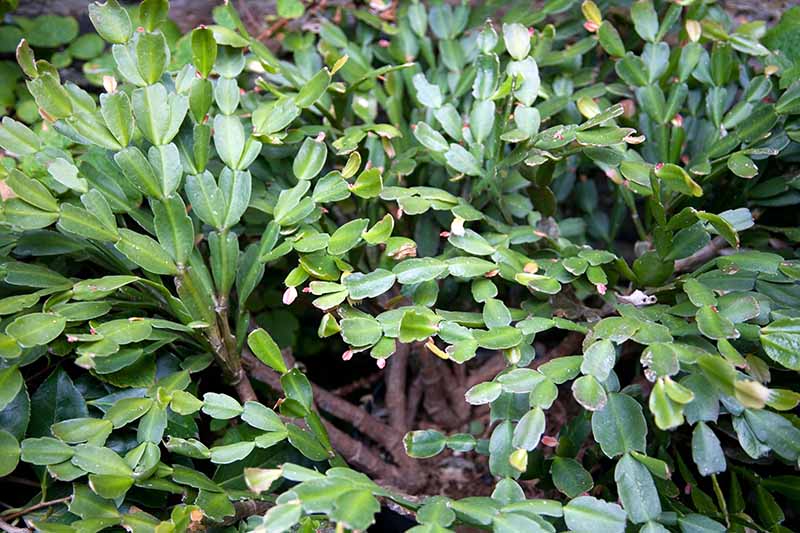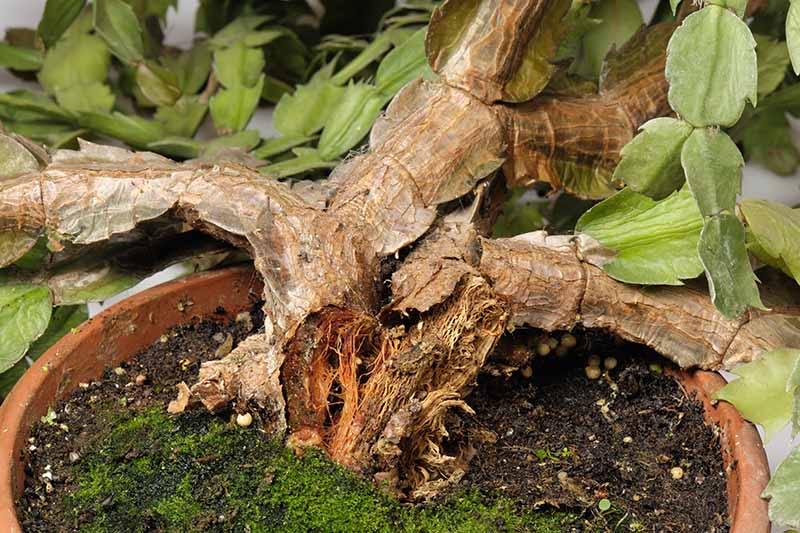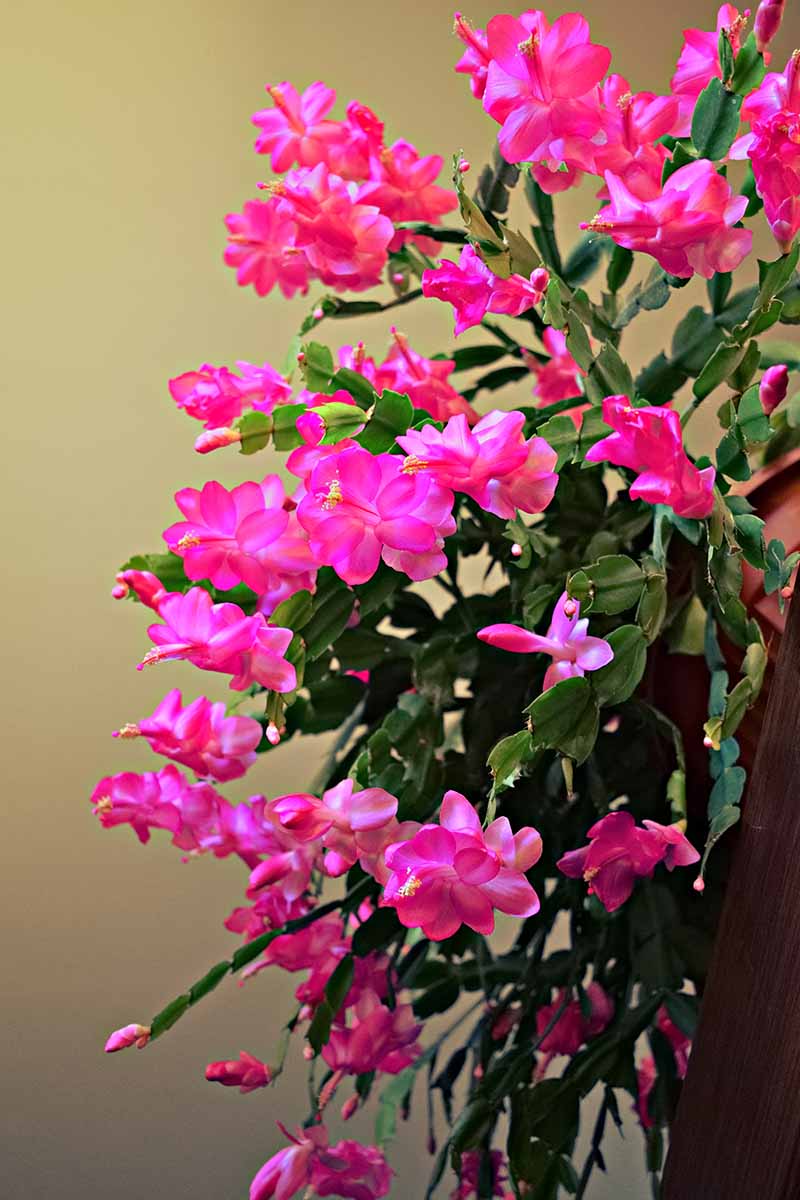It grows instead in the moist understories of South American rainforests. As a houseplant, it’s easy to maintain in a container of well-draining, organically-rich potting medium in a location with indirect sunlight. We link to vendors to help you find relevant products. If you buy from one of our links, we may earn a commission. This article zeroes in on one particular characteristic: woody stems. Let’s get started.
Why Do Stems Become Woody?
Christmas cacti don’t have leaves. Instead, they have fleshy green segments called cladodes that join together to form stems. With proper care, a plant may become a family heirloom, often living for 20 years or more. In the case of an older cactus, while there may be a proliferation of green growth cascading over the side of the pot, a peek into the center of the plant is likely to reveal a forest of thick, hard brown stems. Just like a person, when Schlumbergera grows old, there are physical changes. In a nutshell, the appearance of large woody stems is just that – a sign that yours has achieved old age. Does old age spell trouble for your Christmas cactus? Let’s find out.
Age-Related Issues and Remedies
There is nothing inherently wrong with being an old plant, and woody tissue does not detract from its beauty. However, if yours has grown to huge proportions, there could be problems. Two issues that may arise are: a rootbound pot and splitting stems. We’ll explore each.
Rootbound Plant
Schlumbergera plants favor tight living quarters, so roots that are somewhat snug in the pot are not usually a problem. However, when the roots start to peek out of the drainage hole in the bottom of the pot, it may be time to get a slightly larger container, fill it with fresh potting medium, and replant. Roots that are tightly tangled can’t take up nutrients efficiently. And if you haven’t repotted in many years, the potting medium is likely to be depleted of essential nutrients. So, cater to your cactus in its dotage by refreshing it. In addition, if you see signs of malnutrition from poor nutrient uptake, like discoloration and wilting, you may want to give the plant a lift by trimming each stem by one-third before repotting. To do this, use clean pruning shears to cut between the cladode segments. Each cut segment will soon sprout new growth for a rejuvenated appearance, and better nutrient uptake.
Splitting Stems
Another issue with an older plant that has grown quite large is the potential for it to break apart. Even if you don’t need to repot, you may still want to trim each stem by one-third to relieve the plant of excessive weight. When a stem splits, it creates an open wound that is vulnerable to diseases such as bacterial soft rot, caused by Pectobacterium carotovorum, particularly in hot, humid environments. Unfortunately, there is no effective treatment available to cure this condition. In the event that your plant breaks or splits, and especially if the foliage and roots have become mushy or malodorous, there may still be time to act. Unearth the cactus and rinse it thoroughly, roots and all. Use clean pruning shears to cut off all mushy foliage and rotten roots, and repot what’s left in fresh potting mix. Do a deep pruning if necessary, cutting affected stems right back to where the brown woody part begins. Try not to remove more than one-third of the entire plant, as it will be shocked and recovery will likely be slower. Immediately after repotting, apply a dose of all-purpose liquid houseplant fertilizer per package instructions to jump-start recovery. If the damage is extensive, don’t worry, because Schlumbergera are easy to propagate from soft cuttings. To do this, simply find a few healthy green sections at least two segments long, and snip them off with clean pruning shears. Lay them on a paper towel for a few days to heal and form a callus at the point where they were cut. Once they have healed, place them in a well-draining container of moist, organically-rich potting medium, where they will soon grow roots and establish themselves. Find more tips on propagation here.
Celebrate your Christmas cactus. Pamper it in its golden years. Don’t let it become severely rootbound or collapse beneath its own weight. And rest assured that when it bursts into bloom in the holiday season, it’s not thinking of how brown its stems are, and neither should you. Have you noticed woody stems on your Christmas cactus? Let us know in the comments section below and share your tips! If you found this article informative and would like to learn more about Christmas cactus cultivation, check out these guides next:
Is Christmas Cactus Toxic to Cats? How to Make Your Christmas Cactus Bloom Why Is My Christmas Cactus Turning Purple?
© Ask the Experts, LLC. ALL RIGHTS RESERVED. See our TOS for more details. Top photo via Alamy and other uncredited photos via Shutterstock.




